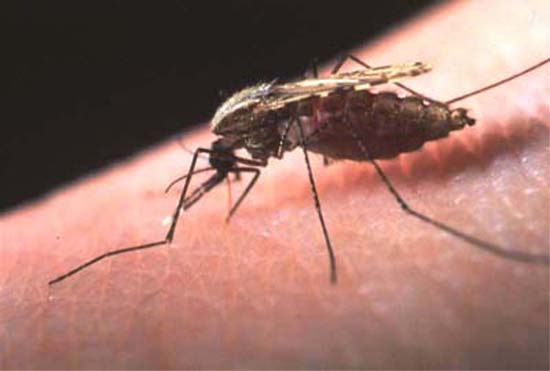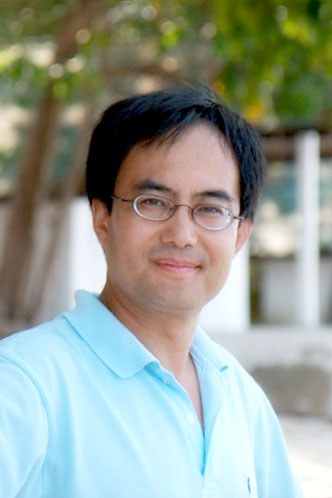NIAID malaria project will tackle substandard, fake drugs
Phil Taylor, 15-Jul-2010
 The National Institute of Allergy and Infectious Disease in the USA has provided funding for 10 centres of excellence in malaria research which will tackle a range of research topics, including new ways to identify substandard and counterfeit antimalarials.
The National Institute of Allergy and Infectious Disease in the USA has provided funding for 10 centres of excellence in malaria research which will tackle a range of research topics, including new ways to identify substandard and counterfeit antimalarials.
The NIAID has earmarked $14.5m in first-year funding for the project, which will extend over seven years. A team of 10 renowned malaria researchers has been assembled and each will be given the task of establishing an International Centre of Excellence for Malaria Research (ICEMR) in a region of the world where malaria is endemic.
About 40 per cent of the world's population is at risk for malaria, with 300m to 500m people contracting the disease each year with around 1m of them dying as a result.
One critical issue in malaria is the emergence of multidrug resistant strains of the malaria parasite, which are in part attributed to an epidemic of counterfeiting of the most widely-used antimalarials, including the newer artemisinin-based combination therapy (ACT) which is currently the most effective form of treatment.
Last year, a study in the New England Journal of Medicine found that patients in Cambodia took two to three days longer on average to clear the infection on ACT than their counterparts in neighbouring Thailand, with the authors concluding that one explanation is likely to be suboptimal doses of drug delivered by counterfeit medicines.
Meanwhile, in 2002, an article published in the British Medical Journal provided insight into the scale of artesunate counterfeiting in southeast Asia, concluding that up to two-thirds of all tablets in circulation were fake.
The NIAID centres will be set up in Africa, Asia, the Pacific Islands and Latin America and aim to develop "critical knowledge, tools and evidence-based strategies to support intervention and control programs by government organisations and health care institutions," according to Dr, Lee Hall, chief of the Parasitology and International Programmes Branch in NIAID.
The centres will integrate clinical and field approaches with laboratory-based immunologic, molecular and genomic methods.
Among the tasks lying before the Southeast Asian ICEMR is the search for monoclonal antibody-based assays for detection and quantification of artemisinin derivatives, as well as the development of methods for monitoring drug quality control.
 The lead researcher at this centre, Pennsylvania State University's Dr. Liwang Cui (pictured), said: "Southeast Asia accounts for 30 per cent of global malaria morbidity and 8 per cent of global mortality."
The lead researcher at this centre, Pennsylvania State University's Dr. Liwang Cui (pictured), said: "Southeast Asia accounts for 30 per cent of global malaria morbidity and 8 per cent of global mortality."
"There are issues related to emerging drug resistance in Plasmodium falciparum, which causes the most serious form of the disease, as well as problems with fake and counterfeit drugs circulating in the region," he added.
The team will also focus on epidemiological studies to evaluate ways to control the spread of the disease and the mosquito vector which carries it, and look at the specific genetic mutations that enable P. falciparum to become resistant.
Penn State will collaborate with several institutions in Myanmar, China and Thailand, as well as the University of California-Irvine in the USA.
"We will build an international malaria centre in this region that brings together diverse expertise from outstanding institutions to address urgent problems relevant to both regional and global malaria control," said Cui.
Related articles:
Study reveals scale of quality issues with antimalarials
Plea for free malaria drugs to curb counterfeits, resistance
USP, USAID screen fake drug warnings in Cambodia
Malaria resistance could lie at counterfeits' door
Counterfeit antimalarial taken off shelves in Ghana
Malaria crisis looming: are fake drugs to blame?
Fake malaria drugs found in Kenya

©
SecuringIndustry.com




 The National Institute of Allergy and Infectious Disease in the USA has provided funding for 10 centres of excellence in malaria research which will tackle a range of research topics, including new ways to identify substandard and counterfeit antimalarials.
The National Institute of Allergy and Infectious Disease in the USA has provided funding for 10 centres of excellence in malaria research which will tackle a range of research topics, including new ways to identify substandard and counterfeit antimalarials. The lead researcher at this centre, Pennsylvania State University's Dr. Liwang Cui (pictured), said: "Southeast Asia accounts for 30 per cent of global malaria morbidity and 8 per cent of global mortality."
The lead researcher at this centre, Pennsylvania State University's Dr. Liwang Cui (pictured), said: "Southeast Asia accounts for 30 per cent of global malaria morbidity and 8 per cent of global mortality."